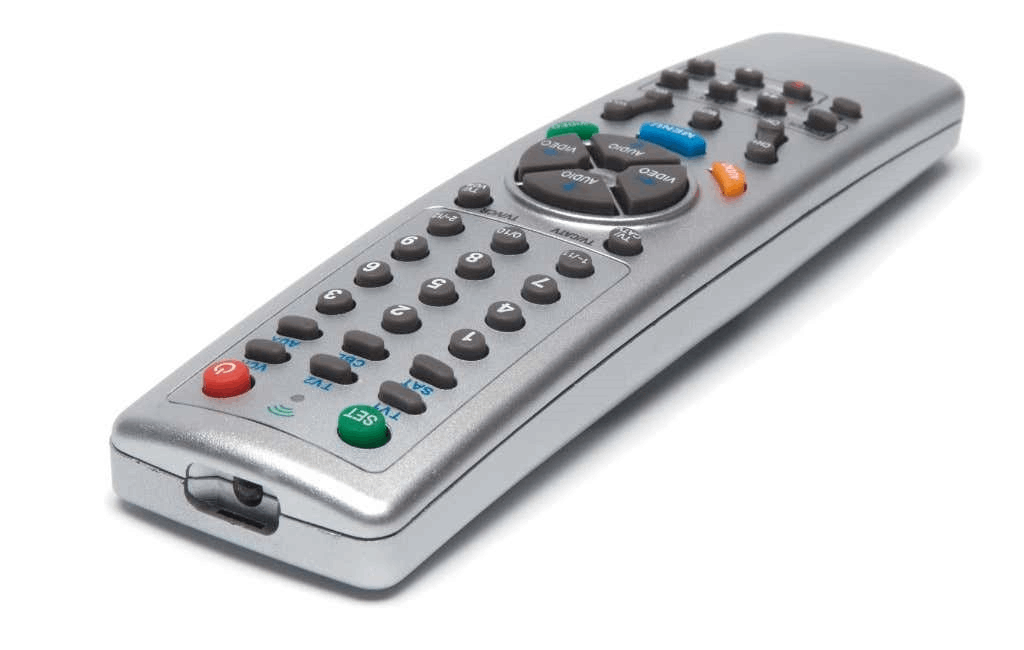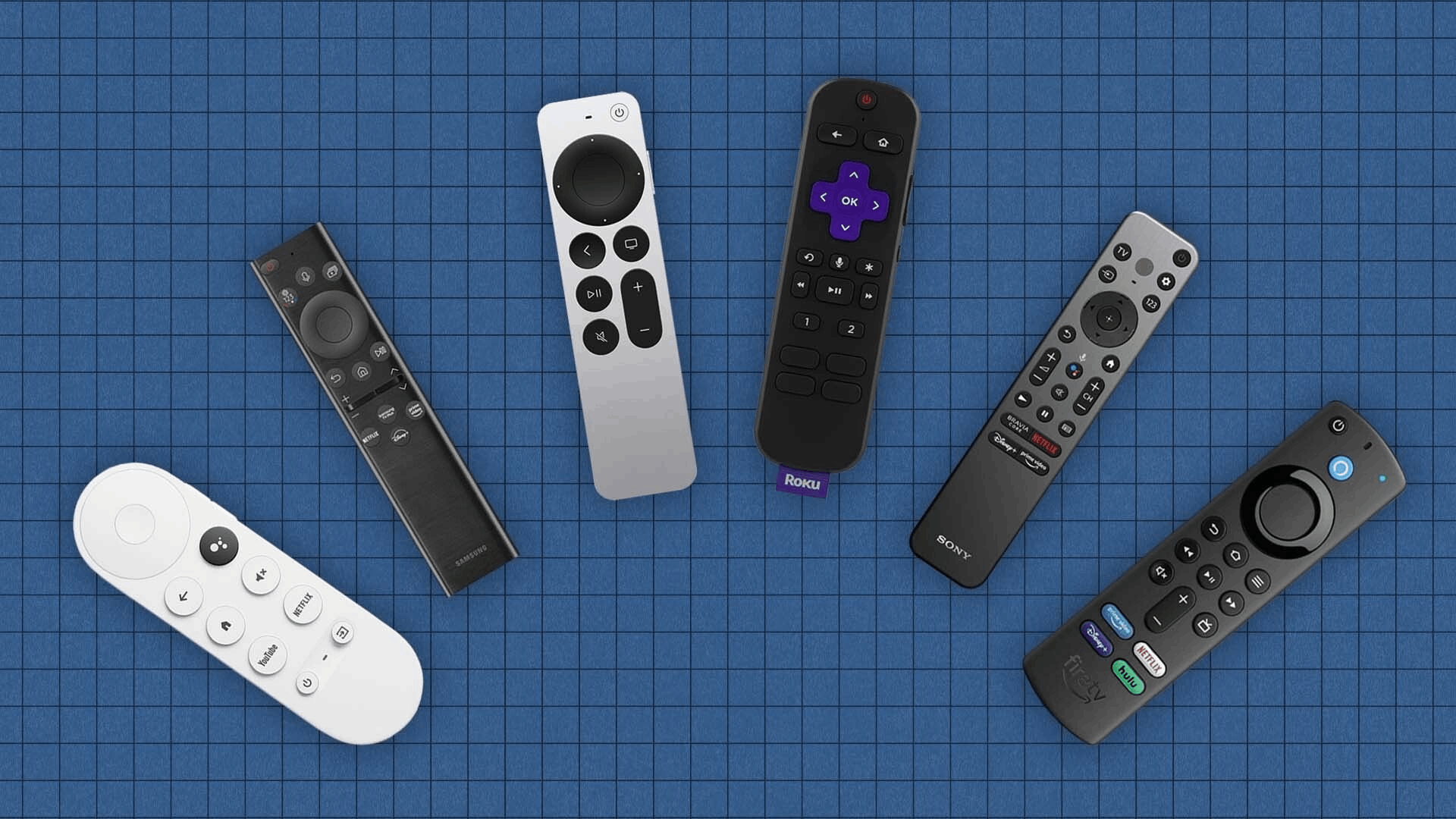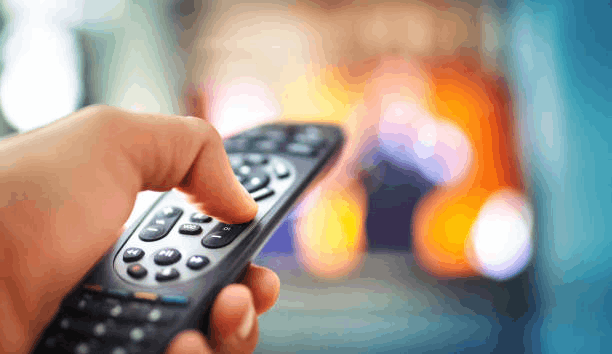What is Remote?
Any of the following may be referred to as a remote:
1) Remote access is sometimes referred to as a remote connection or connects remotely when discussing a connection.
2) A hardware tool that enables a user to control an object or device at another location. For instance, the TV remote allows the viewer to change the station, adjust the volume, or turn on and off the TV without getting up from their chair. Before 1956, TV remote controls required cables running from the TV to the remote, which Dr. Robert Adler of Zenith invented. In simple words, a remote is a special electronic device used to control other electronic devices like TV, Speakers, DVD Players, etc.

The term "remote control" (RC) refers to a tiny, typically handheld electronic device used to operate a different device, such as a radio, television, or audio/video recording device. Infrared signals are frequently used by remote controls, although radio frequency signals are also occasionally used. Numerous operations, including volume, channel, track number, and others, may be managed using the remote control. Modern remote controls frequently offer more control options than the actual item, which might only have a few necessary core controls.
Remote controls typically use infrared signals; however, radio frequency signals can also be used. Numerous operations, including volume, channel, track number, and others, may be managed using the remote control. Modern remote controls frequently offer more control options than the actual item, which might have a few key controls.
Other names for a remote control include a clicker, flipper, tuner, changer, or converter.
History of Remote
Remote control device technology has been available for more than a century. Nikola Tesla created and patented a "Method of an Apparatus for Controlling Mechanism of Moving Vehicle or Vehicles" in 1898. He then publicly displayed his invention using a remote-control boat to drive an electrical exposition at Madison Square Garden. The Philco Mystery Control, a low-frequency, battery-powered radio transmitter, made history as the first wireless remote for consumer electronics in 1939. The first television remote control was developed in 1950 by Zenith Radio Corporation. It was known as Lazy Bones and connected to the TV with a wire.

Most remote controls for electronic appliances use infrared signals to send out an invisible beam of light, usually an LED with a wavelength of 940 nanometers. Multichannel remote controls use advanced technology to modulate carrier signals, demodulate the received signals, and use frequency filters to segregate signals for remote-control operations. However, to activate the device, these infrared signals must be in the line of sight and could be reflected by mirrors.
Many radio manufacturers introduced remote controls for some of their more expensive models by the late 1930s. The Philco Mystery Control (1939) was the first wireless remote control for a consumer electronics item since it used a battery-operated low-frequency radio transmitter instead of most of these, which were wired to the controlled set. This was also the first digital wireless remote control that used pulse-count modulation.
How are they programmed?
An LED generally pulses a series of patterns to power infrared remote controls. The manufacturer chooses these values based on the transmitter controller to the LED. Then they have the receiver handle events based on these patterns on what should occur, such as changing the channel on a television or turning on one's DVD player, etc. These various patterns are selected by whatever buttons one presses on a remote control.
Since many phone models include an IR transmitter on the top, using software to simulate an infrared remote control on the phone is common. Many of the known patterns that manufacturers use and even recognized patterns for specific models are used by the program.
Regarding "programming the controller," that means having a controller with a set of fixed patterns because they are programmed on a chip that sends instructions to the LED, or it may have a programmable one, which is typically what one is when one purchases a "universal remote control," which enables one to set the series of buttons that correspond to specific profiles based on what category of devices it was designed to control. Note that we were only talking about infrared remote controls here. Numerous more types exist, such as the older ultrasonic tone-based controls in use before the 1980s, Wi-Fi-based controllers, and others.
The idea behind both approaches is essentially the same, and a receiver is programmed to understand a set of instructions or signals that are stored on a board and are set to be transmitted.
Some universal remote controls support firmware upgrades, where one may put firmware into the controller with a set of patterns, allowing one to truly "program" one with specific instructions. Such a line was the Logitech Harmony universal remote control. There is nothing special about this approach other than loading instructions into a file that is then decoded by a program to produce a firmware blob that must then be loaded into a PROM on a board that a controller utilizes; the method for doing this will be described later. For those that are not programmable, this is simply a set of instructions placed into a ROM or chip performed at the factory.
Types of Remote Controls
There are many types of Remote Controls available in the market:

Radiofrequency transmissions are used to operate some remote controls. These can be in sight of the object they're controlling. They might have a single point of focus or be multidirectional. Applications for radio frequency remote control include wireless home alarm systems, automatic barrier control, garage door openers, and burglar alarms.
1) Infrared Technology (IR)
Infrared remote controls employ this invisibly bright light. These infrared lights are modulated and tuned to a certain frequency to transmit distinct bursts of IR light to the device. The IR receiver of the controlled device interprets each infrared code as a distinct function and represents various commands, such as power on/off, volume up/down, channel up/down, and many more.
Infrared technology is used to control most modern gadgets. This is typical of TVs, satellite receivers, cable boxes, DVRs, and other home automation equipment. Using infrared technology, mechanical devices like lifts and motors can also be controlled.
Benefits The remote-control circuit for infrared technology is:
- Straightforward for a conventional remote. Consequently, IR technology is less expensive than other technologies.
- An infrared remote control often has a battery life substantially longer than a radio frequency or Wi-Fi remote.
- Commonly, straightforward infrared remote controls don't make use of proprietary technologies. Therefore, there is no price for licensing.
2) Radio Frequency Technology (RF)
A radio frequency (RF) remote control is a portable, wireless device that can operate various electronic devices, including audio, video, and other electronic equipment. Unlike IR remotes, RF remotes do not need to be pointed at the target device.
Although RF technology is now widely used, it is still less prevalent than IR technology or remote controllers. The modulated waveform in the radio frequency range is how this technology operates. A host device receives specific codes from a radio frequency remote control. The host device has an RF receiver that can detect the RF signal from the RF remote and decode those signals to carry out a specific action.
Compressors, automobile alarm fobs, and radio-controlled toys frequently use radio frequency remote controls. These are also utilized in satellite receivers, televisions, high-end stereo systems, and other remotely controllable devices, as well as in home entertainment equipment.
Advantages:
- Radio-frequency remote controls have a long range or roughly 100 feet from the receiver. However, the range may vary depending on the type of remote control (Bluetooth, wire, etc.). It is optional for the item being controlled to be in the same room as the remote because RF remotes' radio signals can pass through walls. The gadget can also be managed from behind a cabinet.
- Since radio frequency impulses can travel great distances, RF remote controllers can also function well outside.
3) Wired Remote Control Technology
Wired remote controls have a physical connection to the item they are used to operate. A wired remote control uses the connecting wire to communicate commands to the device.
Benefits: A wired remote control is operated by a wire connected to the device, so communication blockages are avoided. These can only be used with one device because they are connected.
4) The Wi-Fi Protocol
Control signals are transmitted via a Wi-Fi network by Wi-Fi Remote Control. Radiofrequency (RF) technology is used in these remote controls. Wi-Fi remote controls require more intricate manufacturing processes than ordinary remotes. Since they rely on the Wi-Fi protocol, these remote controls should be connected to a Wi-Fi network.
Advantages: When two devices are linked to the same Wi-Fi network, Wi-Fi remote controls or even remote control-like devices such as smartphones can be connected and controlled to any device. Like how one device can be matched with another using the same network and a controlling capability.
5) Voice control Technology
Although it's uncommon and rarely used, voice control technology for remote controls is currently being researched, so there's no denying that there may be a change soon.
Given that the target device must be compatible with the voice control feature, you can talk to your remote control and instruct it to operate in a particular way. Typically, voice communication remotely controlled technology is included with internet-connected products. To give any command, simply talk into the remote control after turning on the voice control.
6) Sub-Category for remote controls
Single or Dedicated Device Remote control: Specialized remote controls, also known as single device remote controls, are set up to operate a single device. For instance, if you buy a television or a satellite receiver, you also get a special remote control for each device that is only compatible with that device. These can be IR or RF, but they are common and simple to operate.
7) Universal Remote Control
Today, numerous dedicated remote controls exist for various devices such as Televisions, set-top boxes, home theater systems, Satellite tuners, etc. Managing all these remote controls at once can often take a lot of work. To a certain extent, universal remote controls can eliminate this confusion and allow users to replace multiple remote controllers with just one.
With a single remote control, universal remote controllers can operate two or more devices from the same or other brands. Infrared codes are pre-programmed into these universal remote devices. Because universal remote controllers have numerous device/brand infrared codes stored or encoded in their memory (IC), they can operate a variety of devices/brands. It generally has complete control over all the device's key features.
It is important to remember that because these remote controls cannot be upgraded, they may only work with new brands or devices that hit the market because they lack the memory space to save their IR codes. Some universal remote controls offer a unique "Learning" capability that enables them to pick up the codes and functions of other remote controls whose IR codes are not already stored in their memory.
How to use a remote control?
Learning remote controls work with IR technology. Dedicated or single-device remote controls occasionally have a "Learning" feature. Learning the IR codes for the original remote is the primary purpose of learning remote controllers. These remote controls then keep the codes in their memory and work properly later. One must have the original remote control to swap the codes between the two remote controls. One dedicated universal remote control with learning capability can control two devices after the codes have been saved in the memory of the remote learning control.
PC control:
PC applications can be controlled by existing infrared remote controls. You can use infrared remote controls to operate any program that supports shortcut keys from other home appliances (TV, VCR, AC). This is frequently used with multimedia programs for home theatre systems powered by PCs. A device that can decode IR remote control data signals and a PC application that can communicate with this device attached to a PC are required for this to function. The serial port, USB port, or motherboard IrDA connector can all be used to connect. These gadgets ca n be bought commercially, but they can also be created at home with inexpensive microcontrollers. To control a PC using a TV remote, software programs called LIRC (Linux IR Remote Control) and Win LIRC (for Windows) were created.

Game consoles:
Prior to recently, wireless controllers were not commonly used with video game consoles, primarily due to the challenge of playing the game while maintaining the infrared transmitter's line of sight with the console. Early wireless controllers required a lot of space and required replacement alkaline batteries after only a few hours of use. There are several wireless controllers made by other companies, which often use radio links rather than infrared. Even these were incredibly unpredictable and occasionally had transmission delays, rendering them almost worthless. Examples include the Wireless Dual Shot for the PlayStation, the Master System Remote Control System, and the Double Player for the NES.
There may be a few different technologies, which explains the most popular types of remote controllers and their technology.
How to fix a disabled remote?
Remotes are also prone to developing issues and performing poorly. Sometimes only a few keys stop functioning. Sometimes the remote can completely stop working.
Examine the batteries and battery contacts first. Ensure that the batteries are brand new and the contacts are not rusted or unclean. If that doesn't resolve the issue...
Contamination is the next most typical issue, Dirt. Schmutz. Skin oils and dust. The pollutants find their way under the buttons and into the case.
Some practices to be performed:
Remove the batteries.
Disassemble the remote. (This can be scary if you haven't done it before. You could practice on an old, broken remote first.) There may be a few screws in the battery compartment, and often there are clips around the edges of the remote, holding it together. Patience and gentle caution are advised here, as the careful use of a spudger or pen knife.
Clean all the case parts and (usually) the silicone rubber button sheet VERY CAREFULLY, using warm water with a bit of dish soap. An old toothbrush can be helpful, but always be gentle with the silicone rubber buttons. The sheet can tear.
Allow all the parts to dry completely at room temperature. Avoid using any heat.
Using a cotton swab and the best grade of isopropyl alcohol I can find, I clean all the gross contaminants off the PCB, paying special attention to the switch contact areas.
It may take two or three applications of alcohol to completely clean the switch contacts. Be persistent and thorough.
Clean the carbon contacts on the backs of the silicone buttons. Again, you may need more than one application of alcohol to get all the grunge off.
Also, inspect and clean the battery contacts. If the batteries have leaked, you may be able to restore the contacts to good condition, but sometimes, the contacts are ruined, and the remote is now trash. Put the button sheet back into the top half of the remote control's plastic shell. It can usually only go one way.
Place the circuit board into the shell, with the switch contacts on the board facing the button contacts. Be sure the battery contacts are properly placed in their proper locations in the remote-control shell. Also, be sure the infrared LED is properly located in its original spot.
Place the back shell of the remote in position against the front shell and squeeze the parts together gently. You should hear all the little clips engage with audible clicks.
Reinstall any screws that were used to hold the remote together.
Reinstall the batteries, replace the battery cover, and test! Try all the buttons, and make sure they all work properly.